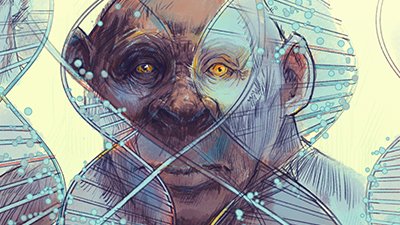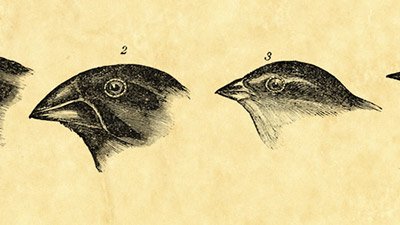
Butterflies the Evolution Icon
They’re not quite peppered moths, but might black swallowtail butterflies be a new icon of evolution?
News Source
University of Texas–Austin biologist Larry Gilbert has spent years studying butterflies of the genus Heliconius, dramatically colored creatures that are common throughout tropical and subtropical America. Because they sport both diverse coloring and a range of behaviors, the butterflies are giving Gilbert’s team an ideal chance to observe the workings of natural selection—and perhaps see a new species form.
The scientists, funded by a U.S. government grant, have studied a population of Heliconius butterflies in Ecuador that come in two main varieties: some with yellow on their wings, others with white. While the team believes the coloration evolved to help the butterflies avoid predators, the colors also play a role in mate selection. Even though both variants are able to mate with one another (thus meeting the traditional definition for a single species), the scientists discovered that only the yellow-winged butterflies prefer to mate with others with yellow wings. (The white-winged butterflies don’t seem to care who they mate with.) Eventually, if each variant stops recognizing and mating with the other, the two may be considered separate species.
“So what we are finding is the butterflies shift their color pattern to avoid predators, but it has this secondary consequence of causing them to no longer recognize each other as potential mates, and we think, actually causing speciation,” explained Harvard University biologist Marcus Kronforst, one of the team members.
Most observed cases of speciation occur when small differences between certain members of a population become magnified over time as those members stop mating with one another. The workings of natural selection can cause the two groups to diverge even more, possibly making interbreeding impossible, but usually just making it unlikely that members of the different groups will ever mate in the wild. This can be sufficient to identify a new species.
It fits well with the biblical creationist model, because we see how the diversity of modern organisms could have rapidly developed since the biological “bottleneck” that occurred during the Flood.
But notice what’s not happening: none of the individuals show signs of having developed new genetic information, which would be required if the new species were more “advanced” than the old species. Kronforst even notes that among the Ecuadorean butterflies, “[T]he only place on the whole genome where they are different is the gene that causes color, because everywhere else that we look, genetically they are exactly the same.” New species or not, this isn’t evolution* in action. Actually, it fits well with the biblical creationist model, because we see how the diversity of modern organisms could have rapidly developed since the biological “bottleneck” that occurred during the Flood.
In a final point to note, Gilbert describes Heliconius’s fascinating intelligence: “[T]hey are smart . . . . [T]hey are able to cruise around and show up at the same little inconspicuous flower at the same time every day. They run a very complicated route in the forest, and then they go roost in the same place every night.”
* We must always be cautious with our terminology. “Evolution” is used by natural scientists both in a casual manner, to mean any sort of changes (usually genotypic) in a population over time, and in more specific reference to the supposed process by which all modern forms of life descended from a single, biologically simple common ancestor. Using the former definition, changes in a Heliconius population could indeed be called “evolution.” The confusion arises because scientists often use “evolution” to mean the latter, and most laymen associate the word with the latter, more contentious definition. Of course, the question is whether instances of the former are evidence of the latter. Evolutionists say yes; creationists say no. And this remains a fundamental disagreement between the camps.
Further Reading
For More Information: Get Answers
Remember, if you see a news story that might merit some attention, let us know about it! (Note: if the story originates from the Associated Press, FOX News, MSNBC, the New York Times, or another major national media outlet, we will most likely have already heard about it.) And thanks to all of our readers who have submitted great news tips to us. If you didn’t catch all the latest News to Know, why not take a look to see what you’ve missed?
(Please note that links will take you directly to the source. Answers in Genesis is not responsible for content on the websites to which we refer. For more information, please see our Privacy Policy.)
Recommended Resources

Answers in Genesis is an apologetics ministry, dedicated to helping Christians defend their faith and proclaim the good news of Jesus Christ.
- Customer Service 800.778.3390
- Available Monday–Friday | 9 AM–5 PM ET
- © 2026 Answers in Genesis




